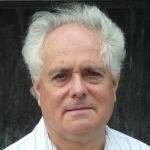
Professor Emeritus
Research Areas
Human papillomavirus gene expression, replication, and pathogenesis
Biography
Tom Broker (b. 1944) received his B.A. in Chemistry from Wesleyan University (Middletown CT, 1966), followed by a Ph.D. in Biochemistry from Stanford School of Medicine (1972) for electron microscopic and genetic studies of bacteriophage T4 DNA recombination pathways, structures and DNA branch migration in the laboratory of Robert Lehman. Post-doctoral research (1972-75) at California Institute of Technology in the lab of Norman Davidson led to the first development of the avidin:biotin complex technique for conjugating macromolecules, and was applied to electron microscopic mapping of gene:RNA transcript complexes and protein:DNA complexes. He then joined Cold Spring Harbor Laboratory in 1975 as Lab Chief of the Electron Microscopy Section and was appointed Senior Scientist with tenure in 1979. Much of his research focus there was on the genetic and transcriptional organization of human adenoviruses, and this research in collaboration with Louise Chow and others resulted in the discovery of RNA splicing and also the first characterization of alternative promoters, alternative poly-adenylation and alternative splicing as coordinated mechanisms that eucaryotes use to extract genetic information for related proteins and functions.
Similar investigations of human papillomavirus transcription began in 1980 and, in 1984, he moved to The University of Rochester Biochemistry Department and Cancer Center to extend the studies to include the regulation of gene expression, the functions of viral early proteins, and virus: host interactions and pathogenic mechanisms. Emphasis was placed on understanding HPV: epithelial keratinocyte interactions in naturally occurring patient lesions and on developing experimental model skin systems that closely reflect these events. In 1993, he joined the faculty in the Biochemistry Department at UAB and was also appointed Co-Leader of the Virology Program in the Comprehensive Cancer Center as well as Senior Scientist in the Center for AIDS Research, the Oral Cancer Research Center and the Cystic Fibrosis Center. His laboratory's research is funded by the National Cancer Institute, the National Institute of Allergy and Infectious Diseases, and the National Institute of Dental Research.
Professional activities include serving as President of the International Papillomavirus Society (www.IPVSoc.org). Personal interests include wildlife photography, adventure travel and the fine arts, particularly landscape art and its relation to the historical development of the natural sciences and the environmental movement.
Research Interests
Human papillomaviruses (HPVs) are responsible for the most prevalent sexually transmitted diseases of viral origin, leading worldwide to over one billion infections, about 75 million active cases of abnormal genital tract cytology (Pap smears), 600,000 new cases of cervical and penile cancer annually, and tens of thousands of cases of juvenile and adult onset recurrent respiratory papillomatosis.
The laboratory is studying the virus-host interactions that control HPV DNA replication and RNA transcription during differentiation of the epithelium and development of benign and neoplastic lesions. Research activities have included determining the structures and coding potentials of the complex families of overlapping, alternatively spliced and polyadenylated viral messenger RNAs, defining the functions and targets of the E1 and E2 replication/regulatory proteins and the E7 oncoprotein which interacts with the retinoblastoma susceptibility protein to control activation of the host replication genes and S-phase entry, and characterizing the transcription and replication patterns of many HPV genotypes in patient-derived lesions (the natural infection) and in experimentally infected or transduced human keratinocytes.
Ongoing projects include the definition of enhancer-promoter-replication origin control elements that are responsible for the squamous differentiation-dependent transcription and replication processes. A major experimental system for these studies are organotypic epithelial raft cultures grown at the medium:air interface, combined with retrovirus-mediated gene transfer of wild type and site-directed mutant control regions and early genes; the examination of cell cycle control proteins modulated by HPV, and the use of these in vitro epithelial tissue models for antiviral drug discovery and evaluation.
Close interfaces are maintained with many medical specialties (pathology, infectious diseases, gynecological oncology, and otolaryngology) to evaluate the natural history, molecular pathology and epidemiology of HPV infections and their responses to therapies. Of particular interest is the activation of HPV infections associated with immune deficiencies due to HIV/AIDS and organ and bone marrow transplantation. As essential tools for such molecular analyses, digital imaging microscopy instrumentation and nucleic acid and protein probe strategies are under steady development. (Please also see the research interests of Louise T. Chow.)
Education
Graduate School
Ph.D., Stanford School of Medicine
Postdoctoral Fellowship
California Institute of Technology
Contact
Office
MKaul Human Genetics Building
Building Room 520
720 20th Street South
Birmingham, AL 35233
Phone
(205) 975-8200
Email
broker@uab.edu